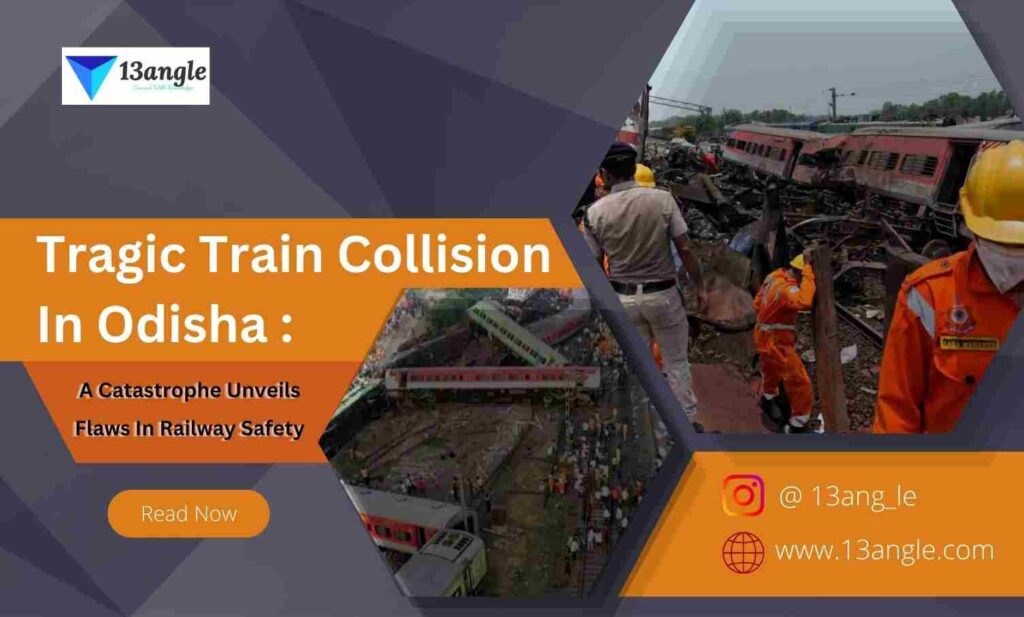Introduction:
The recent train collision in Odisha has once again highlighted the urgent need for improving railway safety in India. The incident, which resulted in the loss of lives and injuries to many, serves as a grim reminder of the challenges that persist within the country’s rail network. To prevent future tragedies and ensure the safety of passengers, it is imperative to address the root causes behind such accidents and take proactive measures to enhance railway safety.
Understanding the Root Causes:
The Odisha train collision underscores various factors that contribute to railway accidents.
Firstly, inadequate infrastructure maintenance and modernization play a significant role. Ageing tracks, outdated signalling systems, and faulty communication networks create an environment prone to accidents. Neglecting regular inspections and repairs compromises the safety of train operations and puts lives at risk.
Secondly, staffing and training issues are crucial factors that deserve attention. The shortage of skilled personnel and insufficient training programs contribute to human errors, which can have catastrophic consequences. Ensuring an adequately staffed and well-trained workforce is vital for efficient and safe railway operations.
Thirdly, the lack of technological advancements and adoption of advanced safety systems remains a concern. While some progress has been made, there is a need for further investment in technologies such as automatic train protection (ATP), train collision avoidance systems and real-time monitoring. Embracing these innovations can provide an additional layer of safety and minimize the likelihood of accidents.
Suggestions for Improving Railway Safety:
Addressing the root causes of the Odisha train collision requires a multi-faceted approach involving infrastructure upgrades, workforce development, and technological advancements. Here are some suggestions to improve railway safety in India:
- Infrastructure Modernization: The government must allocate sufficient funds for the regular maintenance and modernization of railway infrastructure. This includes upgrading tracks, signalling systems, and communication networks. Conducting frequent inspections and repairs should be a priority to ensure the safety of passengers and trains.
- Skilled Workforce Development: Investments should be made in recruiting and training railway personnel. Adequate staffing levels should be maintained to minimize the chances of human errors. Continuous training programs, including scenario-based simulations, can enhance the skills and decision-making abilities of railway employees.
- Technological Integration: Embrace advanced technologies such as ATP, train collision avoidance systems, and real-time monitoring. These technologies can detect potential hazards, prevent collisions, and provide timely warnings to train operators. Integration of artificial intelligence and data analytics can also help identify patterns and predict potential safety risks.
- Enhanced Safety Regulations: Strengthen safety regulations and oversight mechanisms to hold railway authorities accountable for safety lapses. Implementing a robust reporting and investigation system for accidents can help identify systemic issues and prevent their recurrence.
- Public Awareness Campaigns: Raise awareness among the public about railway safety measures, emergency procedures, and the importance of adhering to safety guidelines. Educating passengers about their roles in ensuring their safety and reporting any safety concerns can help foster a safety-conscious culture.
Conclusion:
The Odisha train collision serves as a wake-up call to prioritize and invest in improving railway safety in India. Addressing the root causes of accidents requires a comprehensive approach that focuses on infrastructure modernization, skilled workforce development, technological integration, enhanced regulations, and public awareness. By taking proactive measures and learning from past incidents, we can create a safer railway network that protects the lives and well-being of passengers. It is crucial for the government, railway authorities, and stakeholders to collaborate and commit to making substantial improvements to prevent future tragedies and ensure a secure and efficient rail transportation system in India.







